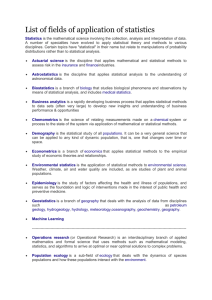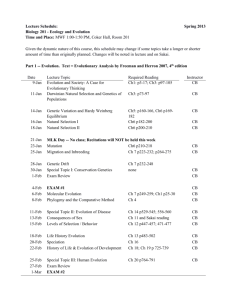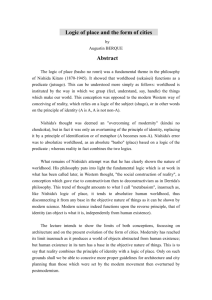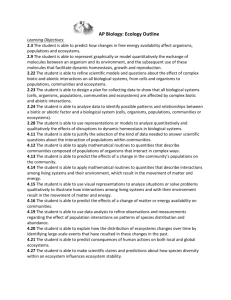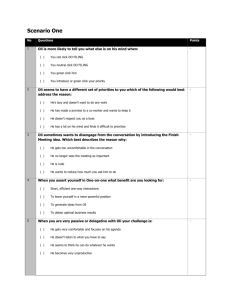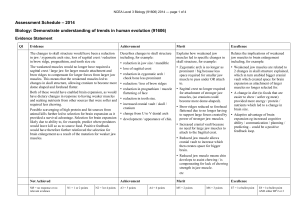AlisaMalloryPopBioFinal
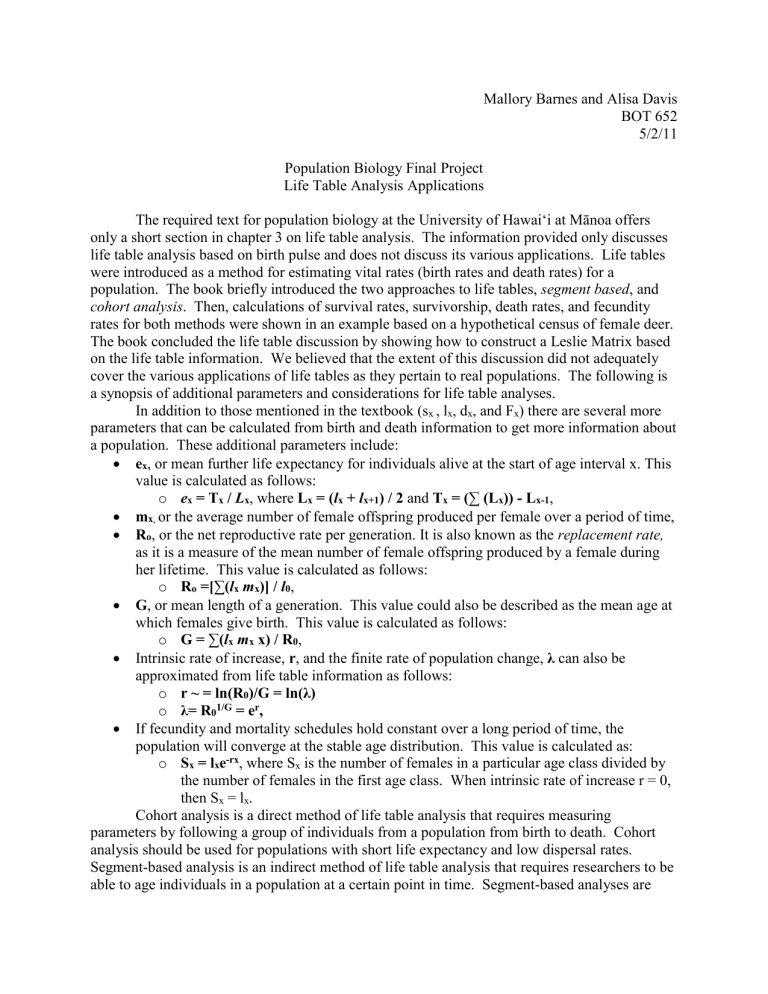
Population Biology Final Project
Life Table Analysis Applications
Mallory Barnes and Alisa Davis
BOT 652
5/2/11
The required text for population biology at the University of Hawai‘i at Mānoa offers only a short section in chapter 3 on life table analysis. The information provided only discusses life table analysis based on birth pulse and does not discuss its various applications. Life tables were introduced as a method for estimating vital rates (birth rates and death rates) for a population. The book briefly introduced the two approaches to life tables, segment based , and cohort analysis . Then, calculations of survival rates, survivorship, death rates, and fecundity rates for both methods were shown in an example based on a hypothetical census of female deer.
The book concluded the life table discussion by showing how to construct a Leslie Matrix based on the life table information. We believed that the extent of this discussion did not adequately cover the various applications of life tables as they pertain to real populations. The following is a synopsis of additional parameters and considerations for life table analyses.
In addition to those mentioned in the textbook (s x
, l x
, d x
, and F x
) there are several more parameters that can be calculated from birth and death information to get more information about a population. These additional parameters include:
e x
, or mean further life expectancy for individuals alive at the start of age interval x. This value is calculated as follows:
m x , o e x
= T x
/ L x
, where L x
= (l x
+ l x+1
) / 2 and T x
= (∑ (L x
)) - L x-1
, or the average number of female offspring produced per female over a period of time,
R o
, or the net reproductive rate per generation. It is also known as the replacement rate, as it is a measure of the mean number of female offspring produced by a female during her lifetime.
This value is calculated as follows: o R o
=[∑(l x
m x
)] / l
0
,
G , or mean length of a generation. This value could also be described as the mean age at which females give birth. This value is calculated as follows: o G = ∑(l x
m x
x) / R
0
,
Intrinsic rate of increase, r , and the finite rate of population change,
λ
can also be approximated from life table information as follows: o r ~ = ln(R
0
)/G = ln(λ) o λ= R
0
1/G = e r ,
If fecundity and mortality schedules hold constant over a long period of time, the population will converge at the stable age distribution. This value is calculated as: o S x
= l x e -rx , where S x
is the number of females in a particular age class divided by the number of females in the first age class. When intrinsic rate of increase r = 0, then S x
= l x
.
Cohort analysis is a direct method of life table analysis that requires measuring parameters by following a group of individuals from a population from birth to death. Cohort analysis should be used for populations with short life expectancy and low dispersal rates.
Segment-based analysis is an indirect method of life table analysis that requires researchers to be able to age individuals in a population at a certain point in time. Segment-based analyses are
more universal and can be used for populations with long expectancy, though the analysis requires a complete census of the population, so low dispersal rates are desirable.
Life table analyses give insights to population age structure as it pertains to birth rates, mortality rates, survival rates, optimum reproductive age, and growth rates. Life tables have proven useful for managing populations, especially when manipulation is required. For example, life table simulations were used to determine growth responses in different habitats after a population of squirrels was decreased (Oli et al. 2001). Life tables have also been used to determine pesticide regimens for pest management on crops, for example, in a study by
Napompeth and Nishida (1974).
The following is an example of a life table constructed from a real data on water buffalo in Africa (Spinage 1972). This study was a segment-based analysis, as all data were from skulls of water buffalo that had died natural deaths in the Akegara National Park in Rwanda. Ages were determined from measurement of the height of the first maxillary molar. Note that L x
, T x
, and e x are included in the life table.
References
Napompeth, B., and T. Nishida. 1974. Life table and pest management of corn. Proceedings,
Hawaiian Entomological Society . 11(3):419-424.
Oli, M.K., N.A. Slade, F.S. Dobson. 2001. Effect of density reduction on uinta ground squirrels: analysis of life table response experiments. Ecological Society of America.
82(7):1921-1929.
Sinclair, A.R.E, J.M. Fryxell, and G. Caughley. 2006. 2 nd ed. Wildlife Ecology, Conservation, and Management. Blackwell Publishing : Malden, MA.
Case, T.J. 2000. An Illustrated Guide to Theoretical Ecology. Oxford University Press : New
York, NY.
Spinage, C.A. 1972. African ungulate life tables. Ecology . 53(4):645-652.
![[CLICK HERE AND TYPE TITLE]](http://s3.studylib.net/store/data/006863514_1-b5a6a5a7ab3f658a62cd69b774b6606c-300x300.png)

